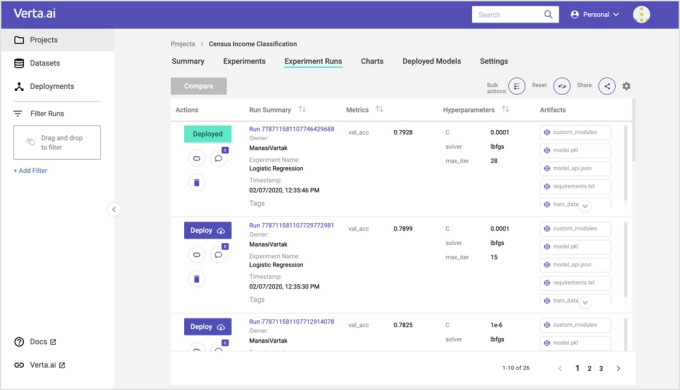InCountry raises $18M more to help SaaS companies store data locally
We’re seeing a gradual expansion of national regulations that require data from SaaS applications to be stored locally in the country where it’s sourced and used. Today a startup that’s built a service around that need — specifically, data residency-as-a-service — is announcing some funding to continue building out its company amid strong demand.
InCountry, which provides a set of solutions — comprising software as well as some consultancy — that helps companies comply with local regulations when adopting SaaS products, has raised $18 million in funding.
This is technically an extension to its Series A, but in keeping with the growth of its business, it comes with a big bump to its valuation: the startup is now valued at “north” of $150 million. Founder and CEO Peter Yared said this is more than double the valuation of its previous round a little over a year ago.
The money is coming from a mix of strategic and financial investors. It’s being led by Caffeinated Capital and Abu Dhabi’s Mubadala, with participation from new investor Accenture Ventures and previous investors Arbor Ventures, Felicis, Ridge Ventures, Bloomberg Beta and Team Builder Ventures. Accenture is one of InCountry’s key channel partners, reselling the software as part of bigger data management and integration contracts, Yared tells me.
The company has seen a decent bump in its business in the last year, expanding to 90 countries from 65, where it provides guidance and services to store and use data in compliance with legal requirements. Alongside that it has an increasingly long list of software packages that it covers with its products. The list currently includes Salesforce, ServiceNow, Twilio, Mambu and Segment, with customers including a large list of enterprises including stock exchanges, banks and pharmaceutical companies.
“This company was based off a crazy thesis,” Yared said with an almost incredulous laugh (he has a very jocular way of talking, even when he’s being serious). “Now it’s 20 months old, and our customers are banks, pharma giants, stock exchanges. We are proud that large institutions can trust us.”
A big bump in its business in recent times has been in Asia Pacific and the Middle East, which are two main regions when it comes to data residency regulations and therefore ripe ground for winning new customers — one reason why Mubadala is part of this round, Yared said.
“At Mubadala we are committed to backing visionary founders whose innovations fuel economies,” said Ibrahim Ajami, head of Ventures at Mubadala Capital. “Since day one, InCountry’s cloud solution has addressed a massive challenge in this era of regulation by giving businesses the tools to grow internationally while remaining compliant with data residency regulations. We’re doubling down on our investment and are supporting InCountry’s expansion into the MENA region because we believe they are the best team to help drive global business forward.”
Partly due to the growing ubiquity, flexibility and relatively cheap cost of cloud computing, software as a service has been on a fast growth trajectory for years now. But even within that trend, it has had a huge boost in 2020 as a result of the global health pandemic.
COVID-19 has given the need for remote computing, and being able to access data wherever you happen to be — which in many cases today is no longer in your usual office space. On top of that, we have a lot more “wiggle room” in business, with organizations quickly scaling up and down with demand.
The knock-on effect has been a big boost for SaaS. But that growth has come with some caveats, and one of the biggest alongside security has been around data protection, and specifically national requirements in how data is stored and used. Arguably, SaaS companies have been more concerned with scaling their software and business funnels than they have been with how data is handled and how that has changed in keeping with local regulations, and that’s the opportunity that InCountry has stepped in to fill.
It provides not just a set of software to store and handle data in a secure way, but also an extensive list of legal advisors with expertise at the local level to help companies get their data policies in order. It’s an interesting model: While InCountry’s been an early mover in identifying this market opportunity and building technology to address it, it’s buffered its competitive position not with a sole focus on technology, but an extensive amount of human capital to get each implementation right.
That can prove to be a costly thing to get wrong. In the EU in July, the Court of Justice of the European Union (CJEU) put down the EU-US Privacy Shield — a framework that let businesses transfer personal data between the European Union and the United States while ensuring compliance with data protection regulations. This has impacted some 5,000 companies, which now have to rethink how they handle their data. The fine for not complying with storing data locally means that they can be fined up to 4% of their revenues.
Yared tells me that for now, the main competitor to something like InCountry has been companies building their own policies in house. Some of those solutions would have been done completely in house and some in partnership with integrators, but all of them were hard to scale and were painful to maintain, one reason why companies and their business partners are turning to working with his startup.
“Accenture Ventures is pleased to support InCountry as it continues to expand globally,” said Tom Lounibos, managing director, Accenture Ventures, in a statement. “InCountry’s software solutions are helping companies address the critical issue of becoming and remaining compliant with a multitude of data residency laws. This expansion will help support enterprises as they unlock their business across borders.”
![]()



